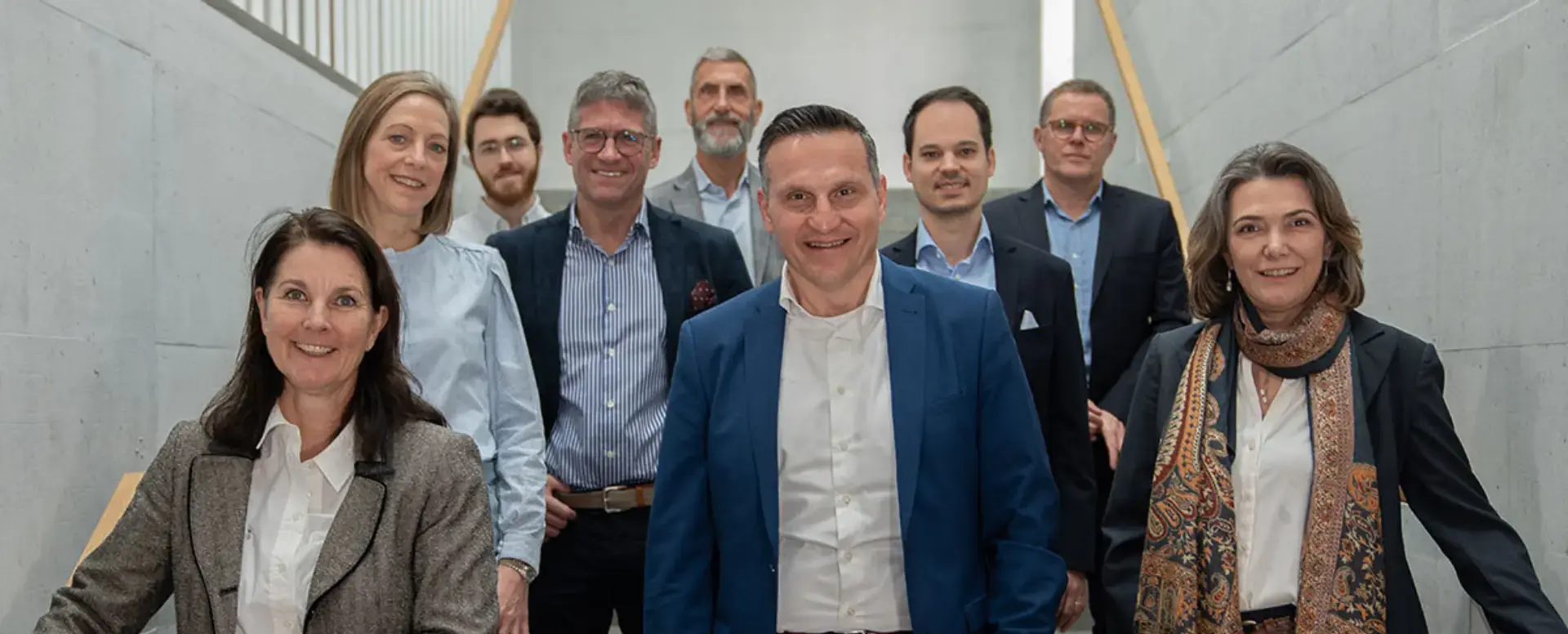Europe is currently wrestling with a stubborn paradox: many organisations are desperately seeking talent, yet one of the largest untapped pools lies within their grasp – workers aged 55 and above. As demographic shifts intensify, the urgency of integrating senior talent into strategies for growth and innovation becomes ever more apparent.
The demographic imperative: why 55+ talent matters now
Dominic Baumann, Managing Director at Alixio Consulting Switzerland captured the urgency, “I’m convinced that demographic change will shape our economy even more strongly than AI and we’re not really preparing for ageing in the same way. Above 90% of employers tell us that 55+ is a crucial segment to the success of their companies. However, at the same time, only 20% say they see this segment as strategically important in their recruitment processes. So, you have a gap of 70%! I find that astonishing. It’s not a future issue. It’s an issue of today.”
This cuts to the heart of what many European labour-market studies describe: the ageing of the workforce is not a distant concern but an active, escalating challenge. In the EU, the number of workers aged 55 or more has risen from 24 million in 2010 to over 40 million by 2024. Yet despite such growth, many companies still treat senior talent as a “nice to have” rather than a strategic imperative.
This pattern is doubly perilous because the broader working-age population in Europe is shrinking. According to BusinessEurope, the EU’s working-age population (20-64) has declined over the past decade and is projected to lose another 35 million people by 2050. This contraction deepens the urgency of tapping underutilised segments of the labour force.
Moreover, in the face of widespread skills mismatches – where roles go unfilled not because people are unavailable, but because companies are looking in the wrong places – senior talent offers not just quantity but quality.
As Baumann put it, “It’s a bit more of a mismatch than a shortage. There are a lot of skills and competencies companies are looking for that they are not finding because they’re looking in the wrong place. Widening the recruitment lens to also look for experienced hires is a big opportunity.”
The message is clear. If firms continue to ignore 55+ talent, they risk remaining below the radar of a strategic advantage that many others will fail to seize.
Debunking myths, identifying strengths
One of the biggest obstacles to mobilising senior talent is mindset, the myths, biases, and assumptions that persist in HR and leadership circles.
Margret Schuit, SVP Business Development at Global Talent Hub, acknowledged these headwinds, “With senior talent in the organisation there are a lot of myths that they are slowing down, they are not willing to learn, or that they work with outdated technology skills.”
Michael Moran, Director and Founder at 10Eighty, similarly framed the resistance as more psychological than factual. “There’s a lot of myths around workers over 55. People think that because you’re over 55, A, your skills are no longer relevant and B, you’re not prepared to learn.”
In fact, research bears out that age is not a determinative barrier to learning or adaptation. Moran emphasised the role of curiosity over age. “We have a phrase in the UK ‘you can’t teach old dog’s new tricks.’ That’s absolutely nonsense. Actually, what’s really the issue is curiosity, and in my mind, curiosity is not an age thing.”
But what are the strengths mature workers bring? Moran summarised three core advantages: business experience, emotional intelligence and people management skills. “You’ve lived, you may have brought up children, you may have had a series of jobs or worked with difficult or demanding clients. When you’ve got multi generations in the workplace, the younger workers really respect the emotional intelligence older employees bring.”
This aligns with findings in European HR research: senior workers can offer stability, mentors to younger colleagues, and contextual wisdom in times of volatility.
Opportunities and strategic shifts
If we accept the demographic and talent logic, the real question becomes: how do organisations structure themselves to welcome and leverage senior talent?
1. Rethink employment contracts and flexibility
“Organisations are going to need to be much more agile in terms of how they recruit people.” noted Moran. “They’re going to have to work very hard on attraction and retention. For example, changes to the employment contract for people with portfolio careers or even job shares. For a lot of this group, money won’t necessarily be the main driver. The opportunity is there for organisations that can build a strong mission and purpose as a way of attracting people.”
Indeed, senior workers often prize autonomy, meaning and control over hours rather than maximum salaries. In many EU countries, older workers already prefer part-time work: in 2023, older workers were more likely to be in part-time arrangements.
One European public admin study shows that around 64% of central administrations use phased retirement or reduced working hours options to retain older staff. The private sector would do well to follow suit: flexible job-sharing, project-based contracts, or consultancy hybrids can make senior re-engagement both attractive and manageable.
2. Invest in lifelong learning and reskilling
Audrey Klieber, SVP Workforce Transformation at Alixio Group, stressed, “How do we anticipate this mismatch (of skills) and how can we set up reskilling programmes in anticipation of the need’s companies will have in the future?”
The OECD echoes this. In Navigating the Golden Years, it argues that to maintain employability beyond 60 or 65, workers must access continuous training, supported by both public policy and employer programs. Yet participation in training is currently much lower for older workers compared to younger cohorts – especially in southern and eastern Europe.
Companies should proactively map the 3-5 year skills they expect to need, then offer tailored training to senior employees to reskill or upskill. Klieber’s point about linking present competencies to future ones – and bridging that gap – is crucial:
“When we work with organisations at Alixio Group, we often put career paths or projects in place to anticipate the competencies companies will need according to their 3-5-year strategy. This leads to: how do I match the competencies I have to the competencies I will need in the future? And how do I bridge the gap?”
When senior workers receive training and see a path, they are far more likely to stay engaged – not simply out of obligation, but out of aspiration.
3. Design transitions and multi-generational workplaces
Klieber also flagged a cultural and operational challenge.
“If people stay longer in the company, then we can assume we will have two or maybe three generations in the company working together. How do we manage and organise this? Different generations need different types of management, which can create some difficulties.”
Schuit expanded on this, “In a few years from now, there will be five generations in our workforce. And that represents a huge stretch. We need to rethink culture based on what we want to achieve.”
The workforce is becoming more generationally diverse than ever. Yet many organisations still default to management styles shaped by mid-career homogeneity. To make multi-generation collaboration work, firms must empower managers with generational sensitivity, inclusive leadership training, and intentional collaboration design.
Moran also drew attention to the importance of rethinking entry and exit trajectories.
“Organisations have got to look at the way people come into the workforce and go out of the workforce. They’re going to have to work very hard around persuading people to stay. I heard a story of a headmistress of a school, she had a 10-year plan to leave the workforce. The first part being that she stepped down from being headmistress to being head of department. After being head of department for two or three years, she then went back to frontline teaching.”
The broader lesson: exit isn’t a cliff – it can be a tapering journey. Structuring roles that transition from full-time leadership to advisory or mentoring positions allows organisations to retain institutional memory and ease succession gaps.
4. Shift the leadership mindset
Baumann put it bluntly. “It starts with a leadership mindset in general. It’s not just the recruitment team or the HR team. You really have to embed it in the culture of a company. You have to embed it in the mindset of leaders.”
Too often, inclusion of senior talent is seen as a niche HR initiative or compliance checkbox. But unless senior inclusion is woven into leadership views – the way performance, strategy and opportunity are framed – it will remain marginal.
To change that mindset, organisations need to collect and share data on senior performance, retention, cost-benefit metrics, and case studies. Moreover, they should embed age-diversity metrics in leadership accountability and performance targets. In effect, treating 55+ engagement not as a social agenda, but as a strategic lever.
Barriers and risks: what holds firms back?
Despite legal prohibitions, age bias remains entrenched in recruitment. In France, opinion pieces and investigations have described how many employers publicly support raising the retirement age while still filtering out applicants over 50 through biased algorithms. Similarly, senior candidates often receive fewer development opportunities and lower access to training, further compounding skills gaps.
While Eurofound’s analysis of older workers underlines another persistent inequality: poor health is a significant predictor of early labour-market exit. Many older people leave prematurely due to health strains, inflexible roles, or work intensity mismatches. Unless organisations consciously redesign roles to suit varied physical capacities – e.g. flexible hours, remote work, ergonomic enhancement – they risk attrition.
Organisations can partner with public institutions and regional authorities to tap incentives, subsidies, or tax breaks offered in many European jurisdictions for hiring or retraining older workers. Many national policies explicitly encourage longer working lives and training among older workers.
From untapped potential to strategic asset
The truth is this: organisations that continue to ignore senior talent are doing so at their own risk. The demographic tidal wave is here, and the talent pool of 55+ workers offers not only volume, but a rich mix of experience, emotional intelligence, and institutional memory. The key is not hoping older workers will trickle in but proactively designing recruitment, training, career pathways, and transitions around their strengths and needs.
As our experts urged, this is not about finger-pointing – it’s about purposeful transformation. If timely leadership mindset shifts, structural redesign and generational integration are embraced, organisations can turn a 70 % recruitment gap into a powerful differentiator.





